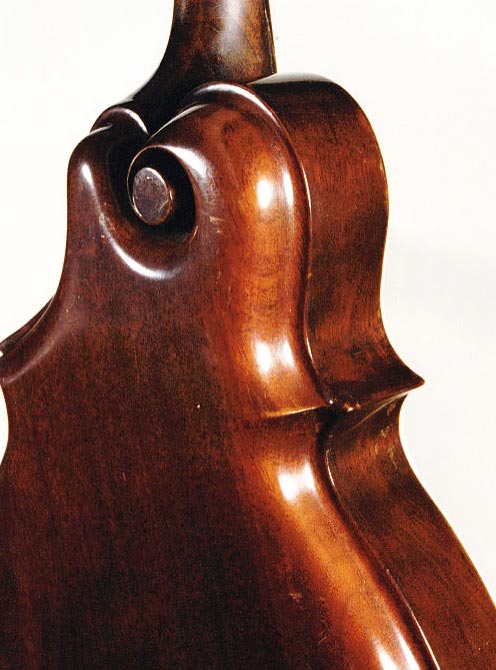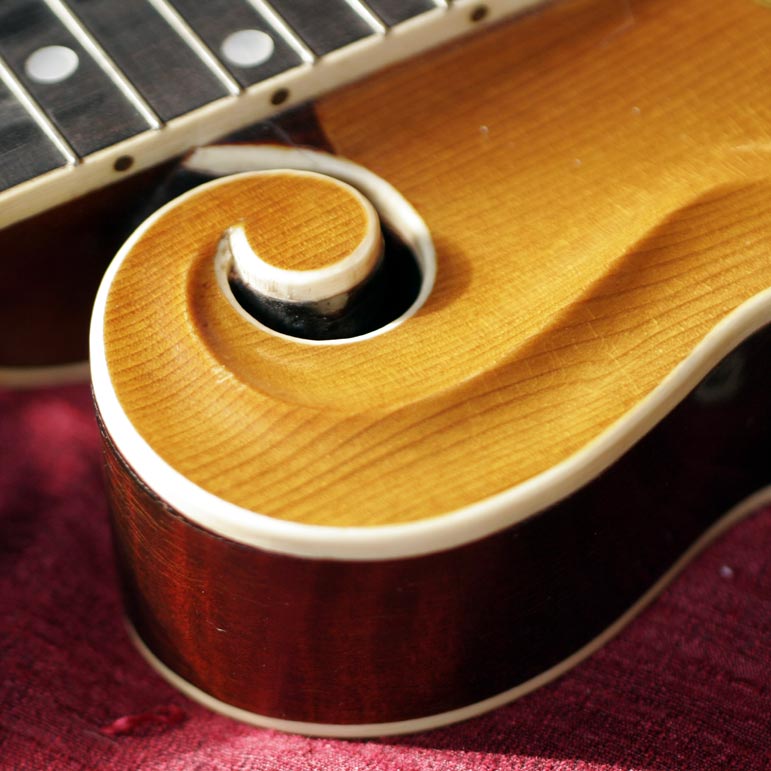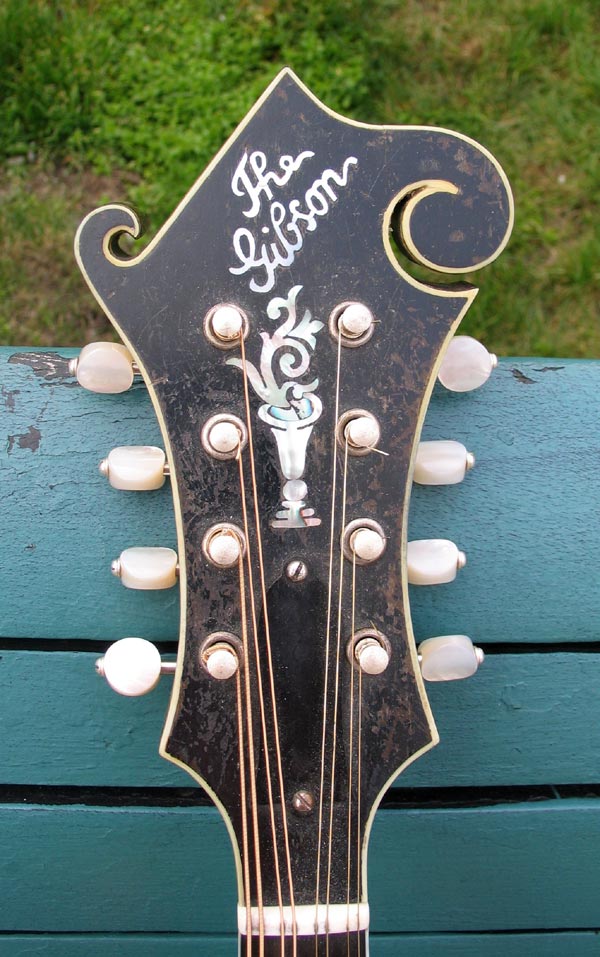look through the archive but was defeated - apologies if this has been talked to death in the past.
does anyone know where the scroll and distinctive "f" headstock came from?
look through the archive but was defeated - apologies if this has been talked to death in the past.
does anyone know where the scroll and distinctive "f" headstock came from?
I'd say it came from a lunatic genius designer who took a chance...and lucked out. There are piles of similar attempts that have failed, in every art form. I know that isn't the specific info you were looking for, Bill, and I apologize. Someone else will know the name and dates of this particular lunatic genius. I'm guessing it's Orville Gibson....
I thought Orville Gibson came up with it. Or did he steal it from some one else?
A couple of mandolins
A couple guitars
An Upright Bass
Some banjos
Wax Paper over a comb
A Loar era Didjeridoo
"I Never Wanted To Be A Barber. I Always Wanted To Be A Lumberjack !"
A good place to start your inquiry is the Cafe's "Brief History of the Mandolin."
Allen Hopkins
Gibsn: '54 F5 3pt F2 A-N Custm K1 m'cello
Natl Triolian Dobro mando
Victoria b-back Merrill alumnm b-back
H-O mandolinetto
Stradolin Vega banjolin
Sobell'dola Washburn b-back'dola
Eastmn: 615'dola 805 m'cello
Flatiron 3K OM
It really hasn't been talked to death but it was discussed here.
"It's comparable to playing a cheese slicer."
--M. Stillion
"Bargain instruments are no bargains if you can't play them"
--J. Garber
thanks for the links - i don't know why but i always had the feeling they were bavarian in origin ... baroque as well.
I'm sure he got the idea here:
"It's comparable to playing a cheese slicer."
--M. Stillion
"Bargain instruments are no bargains if you can't play them"
--J. Garber
the Scroll, as of Parchment. for the written word,
rolled up and unrolled as required ,
predated books with pages by many a century.
the capital of the classical column echoes that theme in architecture.
You could say Orville Gibson was doing a design riff on classical themes.
writing about music
is like dancing,
about architecture

Bob Devellis has a great deal worth reading here on the matter.
Jamie
There are two things to aim at in life: first, to get what you want; and, after that, to enjoy it. Only the wisest of mankind achieve the second. Logan Pearsall Smith, 1865 - 1946
+ Give Blood, Save a Life +
how the scroll came to be placed on the body of the instrument, instead of the headstock, is anybody's guess - but i can understand how came to be. the "f"-style headstock, however is a thing of wonder. it's one of those things you look at and think - it is what it is - and accept it as such. but then, one day, you "see" it and wonder how in the world did it ever come to be?
i'm sure i've seen something like it folk design - swiss or southern germany.
The lines of the F peghead changed quite a bit. This is a post-factory Orville piece (1906) but shows Orville's "shape" really well

Here's Orville's early scroll shape- quite spherical as compared to a violin scroll.

Isometric view really shows the "orbularity"

fast forward to fall 1909. more of a point up top, sharper angles around the larger peghead scroll, less of a complete rotation compared to Orville's showpieces
Scroll is flattened from the original ball, but retains a very sharp "ridge"

Jump way ahead to a Loar peghead. Note that the bulge of the larger scroll is ack, the point is less pronounced, and the peghead's hourglass figure is not as swooping

here's a flatter still scroll profile from that same loar

Wow Dan! Thanks for sharing your thoughts, and photos. Many of us benefit from your knowledge (and mandolin obsession).
"Ancora lmparo", said Michelangelo when he was in his 80's (I am still learning)
There's really good article on Norman Blake in the new Fretboard Journal. One of the photo layouts is some of Norman's mandolins and guitars. One of them is a Gibson that has all the characteristics of the three-pointers but no third point. Even the torch and wire inlay. Some middle ground, maybe? It's a beautiful mandolin.
Steven E. Cantrell
Campanella A
I think some talented designer at Gibson in the early teens "tightened up" Orville's mandolin and guitar designs, smoothing out the curves, better balancing the masses, eliminating "busy" elements like the third point (though I'll probably get an argument here), and so on. That doesn't take anything away from Orville's striking original designs--which are truly visionary!
In a related vein, banjo historians have recently been able to positively link the exceptional pearl engraving on the greatest turn-of-the-century Boston banjos (and perhaps some mandolins and guitars as well) to a single Italian craftsman named Icilio Consalvi. No one else even came close. I'll bet there was a designer, possibly Italian as well, of similar talent in the Gibson workshop.
Bob
Robert H. Sayers
Here's a related question.
When did the scroll acquire its function as 'strap hanger'?
It seems clear that neither body scroll or headstock scroll was designed for anything so functional. But it seems that even the earliest instruments were supplied with an end pin for attaching a strap. (true?)
I can't recall whether I've seen pictures from the mandolin orchestra era showing players using a strap at all. And I don't think I've seen even Bill Monroe using the body scroll that way until after the Monroe Brothers days.
Even in the early Blue Grass Boys days (as far as 1947) there are pictures of Bill Monroe not using the scroll for a strap hanger but using the headstock instead.
The attached picture is from around 1950, when Jimmy Martin (on the right) was in the band.
Olaf
That would be approx serial 10,000 to 11,000. There are a couple like that one, though the only others I have seen are blacktop ones. Cool instrument. To me the orange finish or the solid red/subtle redburst are the best looking old Gibson finishes.Originally Posted by (Steve in SC @ Dec. 19 2007, 01:46)
There was a period of rapid evolution and improvements in the 1908-1911 range that really produced some magnificent oval holes. The 3-point body shape was streamlined into the 2-point and shortened (about 1.5" near the tailpiece.. 3-pointers look a little over-inflated!). The raised pickguard came in first with 2 violin chin rest clamps, then with 2 gibson clamps (sometimes one of each!), then quickly the a-model style became used on both a and f-models. The torch inlay was phased out (no!!!!!!), and the double-flowerpot replaced it. The label changed from Orville's smiling face over the lyre mandolin to the "Guaranteed" label that would last through the 30s. Tailpieces lost their pointy pineapple shape and were smoothed into the teens style. The cases were redesigned to fit the smaller Fs, the A cases lost a bit of their arch. Top graduations on A and F models alike lost some of their arch/thickness. The earliest A-models have quite an arch around the fingerboard, giving a similar feel to a raised fingerboard on a later mandolin.
All in all, there was as much innovation going on in the 1910 region as the Loar period. I've often wondered who was the driving force behind those changes.
My absolute favorite instruments made by Gibson are the 1909 F4s. They are the transitional ones that have all the wonderful old-world stylings of the original orvilles, but also the playability enhancements such as the raised pickguard. The earliest 2-point F4s are also among my favorites, they have more violin-like stylings and finishes, and a lovely mellow tone
Dan- I love your term "Orbularity", very descriptive! I will put that one in MY lexicon from here out.
"I knew a girl like that once, such a fine example of orbularity"
I can see it coming.
Timothy F. Lewis
"If brains was lard, that boy couldn't grease a very big skillet" J.D. Clampett
Bookmarks